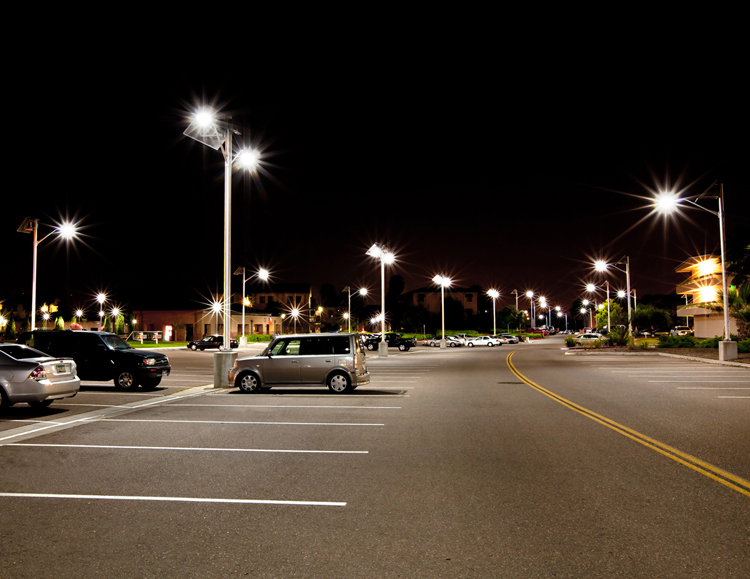
How to Choose the Best Parking Lot Lights: A Comprehensive Guide
Share
Choosing the best lighting for a parking lot is more than just a matter of aesthetics. Proper lighting enhances safety, improves visibility, and can even reduce energy costs. Whether you're managing a commercial parking lot, a residential complex, or a public space, selecting the right lights is crucial. Here’s a detailed guide to help you make an informed decision.
1. Assess Your Lighting Needs
The first step in choosing the best parking lot lights is understanding the specific requirements of your space. Consider the following factors:
- Size of the Area: Larger areas require more powerful lights and strategic placement to ensure uniform coverage.
- Type of Facility: A commercial lot may need brighter lights compared to a residential complex.
- Usage Patterns: Areas with high foot traffic may need more illumination for enhanced security.
2. Understand the Types of Parking Lot Lights
There are several types of lighting technologies available, each with its pros and cons:
- LED Lights: Known for their energy efficiency and long lifespan, LEDs are the most popular choice for parking lots. They provide bright, uniform light and are cost-effective in the long run. For instance, a typical LED parking lot light uses between 70 to 150 watts, compared to 250 to 1000 watts for traditional metal halide lamps. LEDs can last up to 50,000 to 100,000 hours, reducing maintenance costs significantly.
- HID (High-Intensity Discharge) Lights:These include metal halide and high-pressure sodium lights. While they offer bright light, they consume more energy and have a shorter lifespan than LEDs. Metal halide lamps, for example, have an average lifespan of around 15,000 to 20,000 hours and consume about 400 to 1000 watts.
- Induction Lights: Although less common, induction lights are durable and energy-efficient, but they may have higher upfront costs. They typically use between 80 to 250 watts and have a lifespan of up to 100,000 hours.
Comparative Chart of Light Types
The chart below illustrates the lifespan and power consumption of different types of parking lot lights.
3. Consider Light Distribution and Uniformity
Proper light distribution ensures that the entire parking lot is evenly illuminated without dark spots or overly bright areas. Look for lights with suitable beam angles and photometric properties that match your lot's layout. Uniform lighting helps in reducing shadows, improving visibility, and enhancing safety. For example, an LED light with a Type III distribution pattern is ideal for parking lots, as it provides an even, rectangular light spread suitable for larger areas.
4. Evaluate Energy Efficiency and Costs
Energy efficiency is a critical factor, especially for large parking lots. LEDs typically consume 50-75% less energy than traditional lighting options. Additionally, consider the total cost of ownership, which includes initial installation costs, maintenance, and energy consumption over time. For example, replacing a 400-watt metal halide lamp with a 100-watt LED can save up to $200 per year in energy costs per light fixture, assuming an average electricity rate of $0.12 per kWh and 12 hours of operation per day.
5. Prioritize Durability and Weather Resistance
Parking lot lights are exposed to various weather conditions, so durability is essential. Look for lights with high IP (Ingress Protection) ratings that indicate resistance to dust and water. Materials like die-cast aluminum and polycarbonate lenses are durable and can withstand harsh environmental conditions. For instance, an IP65-rated light fixture is dust-tight and protected against water jets, making it suitable for outdoor use in various weather conditions.
6. Look for Smart Lighting Features
Smart lighting systems can significantly enhance the functionality and efficiency of your parking lot lights. Features to consider include:
- Motion Sensors:These can turn lights on or off based on movement, saving energy when the lot is not in use. Studies have shown that motion sensors can reduce energy consumption by up to 30%.
- Dimming Capabilities: Adjusting light levels based on the time of day or activity can further reduce energy consumption. For instance, dimming lights by 50% during off-peak hours can save significant amounts of energy.
- Remote Monitoring:Advanced systems allow you to monitor and control lights remotely, providing real-time data on performance and energy usage. This can lead to more efficient maintenance and quicker response times to issues.
7. Ensure Compliance with Local Regulations
Local building codes and regulations often dictate specific lighting requirements for safety and environmental reasons. Make sure your chosen lighting solution complies with these regulations to avoid potential fines or the need for costly adjustments. For example, some areas may have specific requirements for light pollution control, such as limiting light spillover to adjacent properties.
8. Choose a Reputable Supplier
Finally, selecting a reputable supplier is crucial. Look for manufacturers with a proven track record, positive customer reviews, and comprehensive warranties. A good supplier will also offer support in designing and installing the lighting system tailored to your needs. Leading suppliers often provide photometric analysis to ensure optimal light placement and distribution.
Conclusion
Choosing the best parking lot lights involves balancing various factors, including efficiency, durability, cost, and compliance. By carefully evaluating your specific needs and the available options, you can enhance the safety and functionality of your parking lot while optimizing energy use and reducing costs. Investing in high-quality lighting is not just a necessity but a strategic decision that can offer long-term benefits.
